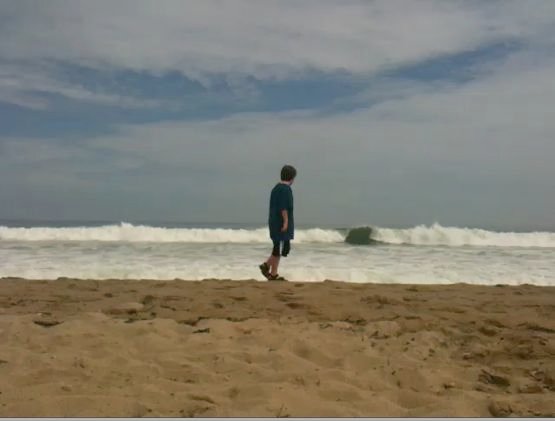The day before yesterday, when Hurricane Bill’s first big waves arrived here at Ocean Park, Maine, I decided to go down to the beach for some bodysurfing.
It was early Sunday morning, well before the Old Orchard Beach Fire Department would close the ocean that afternoon. It was low tide. I could feel a strong undertow tugging on my legs as I walked out to wait for a good ride. The sea was wild with power. I’ve been riding the waves at Ocean Park for decades, and I thought I knew what I was doing.
I had a couple of fantastic rides, catching curling tumblers at just the right moment. My wife and her sister watched me from the low tide flat, watchful and worried. I gave them two thumbs up after jumping up from the shallow water at the end of a long zoom in the foam. I was feeling an extra dose of the boyish exuberance I always feel when riding the waves. At low tide, the waves usually break close enough to the shore that you’re always on your feet, able to touch the sand and make a good leap into the wave as it reaches you. But Bill’s waves were cresting further out.
After ducking my head into one wave that crested too soon, I put my feet down to the sand. With sudden panic, I realized I could not touch bottom. I was in over my head. I knew immediately that the undertow was pulling me away from shore.
I am a strong swimmer, so I began the Australian crawl toward the shore and set my feet down after a few strokes. Nothing. More strokes. Still nothing. I bobbed briefly in the water and knew I was in a very bad situation. I waved my hand at Darlene and Deb and yelled a single cry of “Help!” Since I doubted they could hear me, my shout was more of a prayer than anything else. She and her sister waved back.
I knew the prescribed response to getting caught in a rip current is to swim with the current and angle toward the shore, but everything in me said, “Screw that.” I lit out again toward the beach, swimming as hard as I could. What I am describing here took probably a total of three minutes. Finally, one toe of one foot felt the sand. I swam some more and was able to put both feet on the bottom and walk in to the beach. I told Darlene and Deb what had happened, and we all walked back to the cottage without saying much.
That night, lying in bed at the cottage as Hurricane Bill headed off toward Nova Scotia, the sound of the waves did not delight me the way it always had before. The crashing and thumping were ominous, and I had difficulty getting to sleep. I got up and closed the windows.
I am profoundly grateful to have survived my bone-headed adventure. My heightened level of respect for the sea will protect me and anyone who will listen to me (I’m thinking of you, my soon-to-be-bodysurfing grandson) for the rest of my life. As of today, my plan is to limit my surfing to anemic waves that I can catch in water that’s about knee-deep.
Today the waves are friendly again–safe for boys and men to ride. I promise to be very careful with my life, and I hope you will be, too.
Note: If you click on the photo of the boy, you’ll come to a video which I shot with my iPhone at Sunday high tide, just after the beach had been closed to swimming.

